SRAM SX vs NX: Understanding the differences
Looking for a low-cost 12-speed groupset? We break down the differences between SRAM's two budget drivetrains
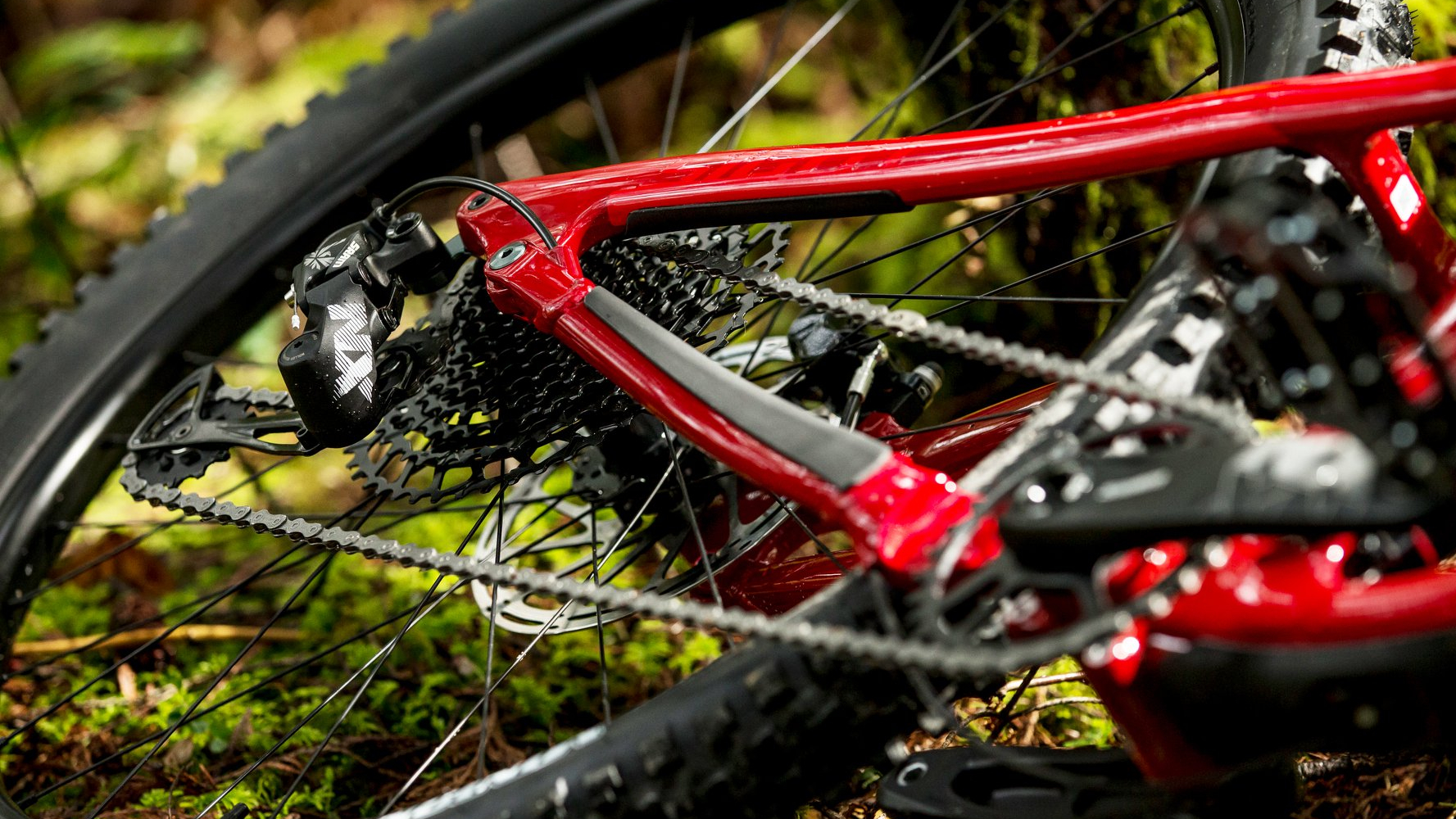
If you’re reading this, you might be either trying to choose between a bike with SRAM SX Eagle or NX Eagle drivetrains or wondering whether to upgrade from SX to NX.
SX and NX are the two lowest rungs in SRAM’s 1x12-speed hierarchy and while they may not be competing against the best MTB groupsets, that doesn't mean they are lacking top features and performance. Both drivetrains are available as 1x12 Eagle which means they’re compatible with wide-range cassettes. (NX also comes in an 11-speed non-Eagle variant, and below SX in the SRAM range you only get 10 speeds or less.)
In terms of price, performance and place in the hierarchy, NX Eagle is somewhere between Shimano Deore and SLX, and SX Eagle is arguably between Alivio and Deore.
A groupset comprises the crankset and chainring, rear mech, shifter, cassette and chain, and that’s what we’re comparing here.
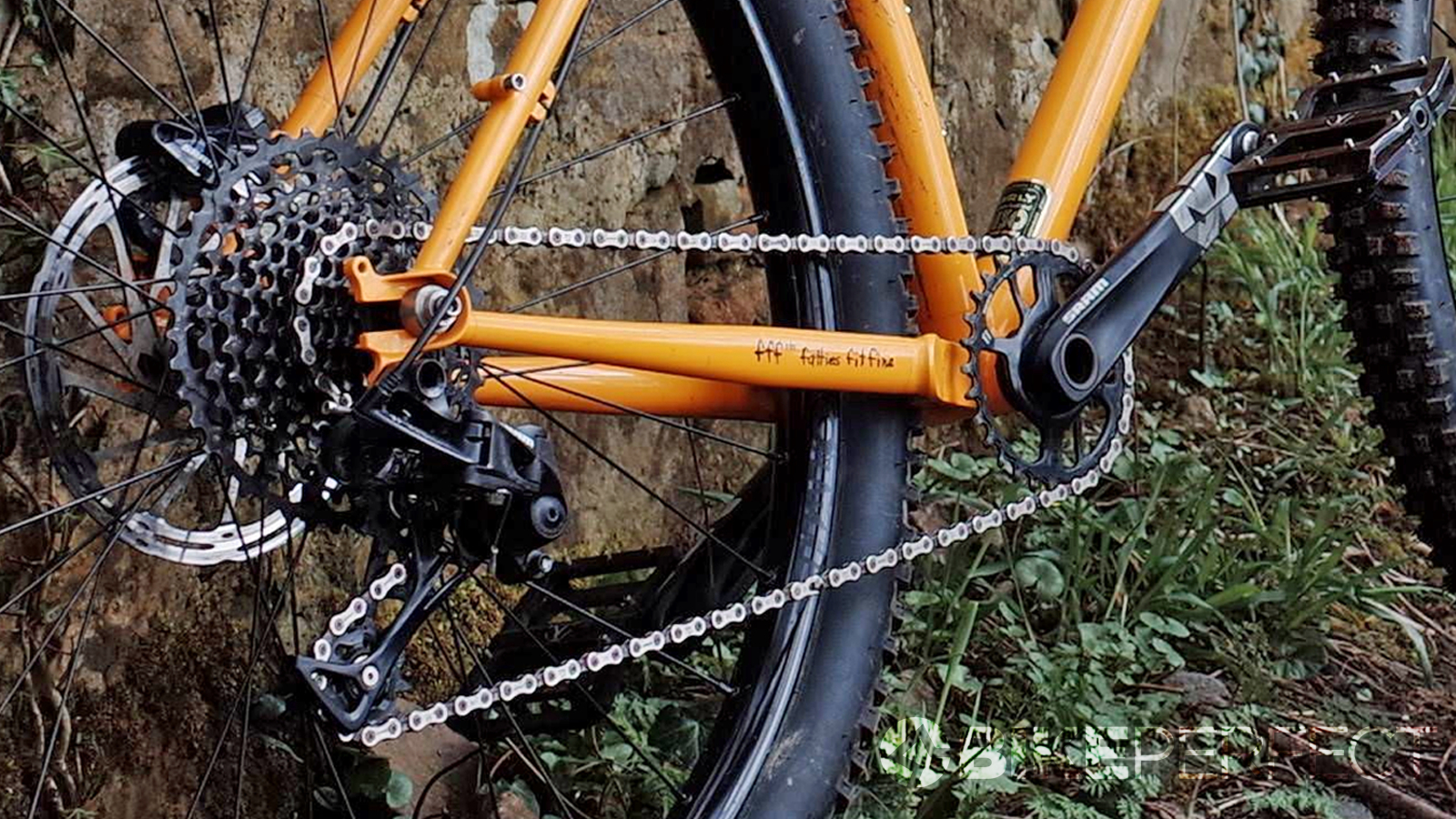
Headline comparisons between SRAM SX Eagle and NX Eagle
The SX Eagle groupset would be around $300 / £300 at RRP and weighs approximately 2,350g. The NX Eagle groupset has an RRP of $383 / £384 and weighs approximately 2,058g. The weights are based on a setup with 170mm cranks, 30T chainring, 10-50T cassette, shifter, chain and rear derailleur.
For comparison, SRAM’s X01 groupset costs around £1,300 and weighs approximately 1,500g.
SX isn’t generally available as an all-in-one aftermarket groupset but you can buy some of the components separately if bits wear out, or upgrade them to other parts in the SRAM Eagle range thanks to their good compatibility.
There are also some variant options within the SX and NX groupsets that affect the weight and price, and that’s worth checking when you’re buying. There’s more on all this below.
SRAM SX Eagle and SRAM NX Eagle Compatibility
SX Eagle and NX Eagle are both relatively retro-compatible, and also compatible with much of the more expensive Eagle range.
The cassettes for SX Eagle and NX Eagle both fit on a standard Shimano HG freehub body, which on the plus side means you could upgrade your groupset to 12-speed from a lot of regular 9, 10 or 11-speed setups without having to change your wheels.
On the downside, you can’t use SRAM’s very widest range cassettes with SX and NX. SX and NX max out at 11-50 (equalling a range of over 450 percent), but to get 10-52 and a range of over 500 per cent, you need to move up to SRAM GX or higher, with a different freehub driver and rear mech. One silver lining is that the narrower extremes in SX and NX keep more natural steps between the gears, and if you want to get a lower low gear on SX or NX, you can always swap to a smaller front chainring (they go down to 30T)
Other than that, pretty much the whole SRAM Eagle family is interchangeable, so it would be easy to upgrade any part of your SX or NX Eagle groupset in the future.
Variants within SRAM SX and NX
NX has an 11-speed non-Eagle option, while SX Eagle and NX Eagle are both 12-speed.
Both SX and NX Eagle ranges include a single-click variant of the trigger shifter. That’s aimed at e-bikes, where shifts across multiple gears at once can cause too much strain on the drivetrain. Most non-electric SX and NX bikes will come with the normal version. There’s also a generic SRAM Eagle grip shift (twist-style) gear shifter that will work across the whole SRAM Eagle range.
SX and NX also have two chainset options, and it’s worth checking which one you’re getting on a bike. The more expensive and lighter variant uses SRAM’s 'DUB' bottom bracket system with external bearings; the cheaper 'Powerspline' version uses a conventional inbound bottom bracket and a solid axle. NX bikes will mostly be specced with the DUB variant.
Be aware that bike manufacturers sometimes mix and match parts to keep costs down, so it’s not uncommon to see a bike specced with an NX crankset but a steel SX chainring, for example.
Now let’s look at the components.
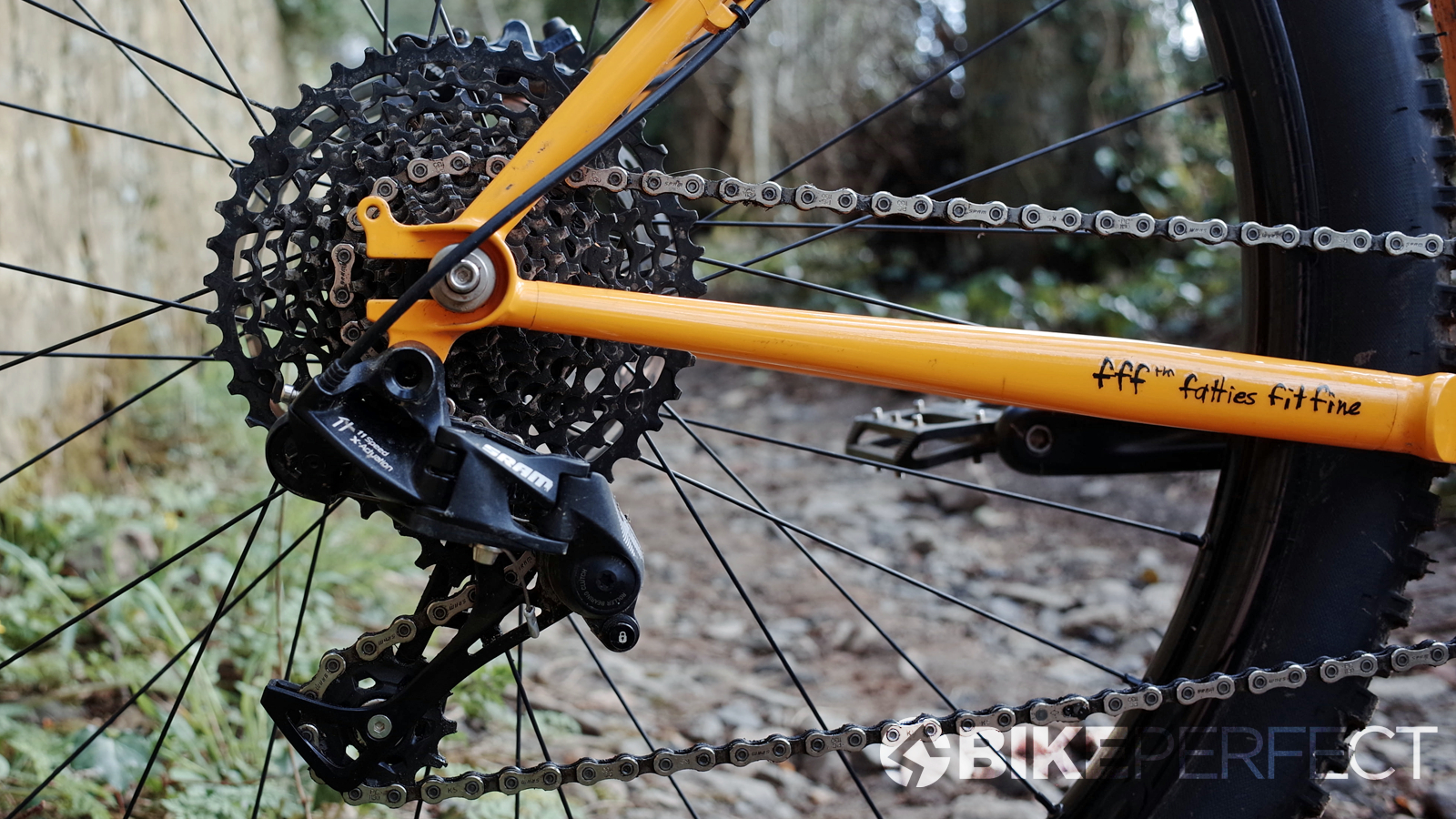
SRAM SX Eagle and NX Eagle rear derailleurs compared
The SX Eagle rear derailleur is made out of stamped steel and injection moulded plastic, and it’s held together with rivets as opposed to the pins and clips of more expensive models. Like NX, its ‘cage lock’ feature can click the mech into a forward position to make wheel removal easier, and like NX Eagle it can handle ranges of 11-50 and 10-50.
Confusingly there are actually two versions of the SX Eagle mech: a lower-spec ‘A1’ version which tends to be fitted to cheaper bikes as an OE part, and a ‘B1’ version, which tends to be available aftermarket, but it’s worth checking what you’re getting.
The SX B1 version is quite close to the NX mech, with a pulley entry point for the cable to make shifting smoother, and ball-bearing jockey wheels. The main differences are that the NX Eagle mech has a built-in clutch mechanism, to help keep the chain stable and minimize dropped chains, and features higher-grade alloys in places.
The SX A1 version is a bigger step-down, with no pulley entry for the cable, and simple self-threaded adjustment screws in the plastic body. Earlier models also had simple bushings on the jockey wheels rather than bearings.
- SX Eagle rear derailleur: £80, approx 340g
- NX Eagle rear derailleur: £111, 339g
SRAM SX Eagle and NX Eagle shifters compared
SX Eagle shifters and NX Eagle shifters are both plastic and both use SRAM’s ‘Zero Loss’ designs for faster engagement. Both shifters can change to five easier gears at a time, or one harder gear.
The only difference is that SX uses a basic, fairly wide, handlebar clamp, whereas NX uses SRAM’s Matchmaker clamp, which takes up less space on the bar and can be connected to compatible brake levers and dropper post levers.
- SX Eagle trigger shifter: £33, approx 115g
- NX Eagle trigger shifter: £36, 110g
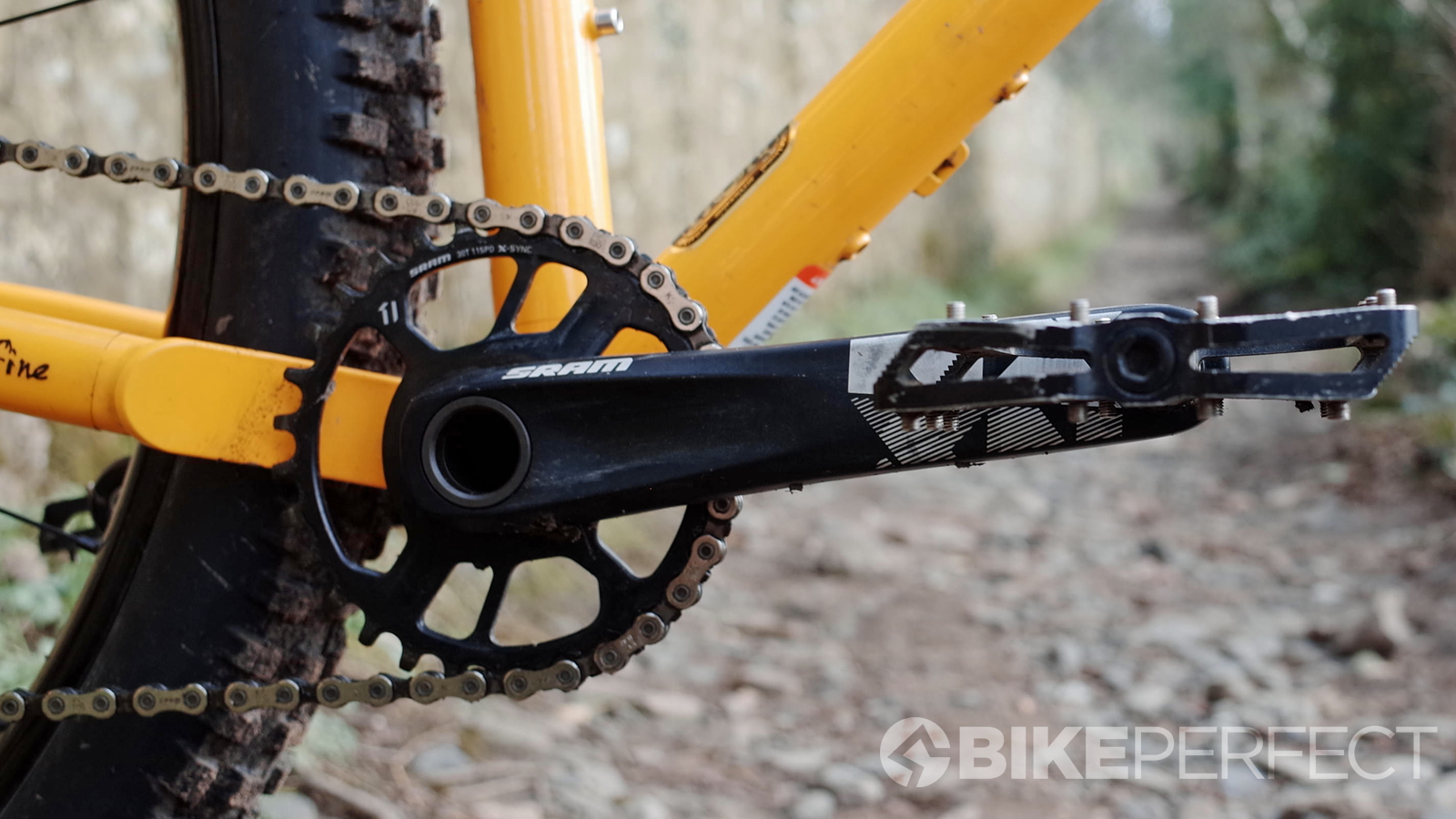
SRAM SX Eagle and NX Eagle cranksets compared
Deep breath… the SX Eagle and NX Eagle cranksets come in two variants: a two-piece ‘DUB’ version with hollow axles and outboard bearings, and a conventional three-piece version with a solid axle internal bottom bracket, which SRAM calls Powerspline. It’s worth checking what you’re getting, but typically bikes specced with NX will get the lighter and more expensive DUB variant.
Comparing the DUB variants of the SX and NX cranksets, the main differences are that the SX chainring is tough but heavier, as it’s made of stamped steel, whereas the NX ring is stamped alloy. Both SX and NX Eagle use forged aluminum cranks, but NX uses a superior 6000-series alloy.
Both SX and NX Eagle cranksets use SRAM’s direct mount chainrings and are compatible with 30, 32 and 34-tooth rings from across its range.
- SX Eagle DUB crankset: £93, weight not available
- NX Eagle DUB crankset: £109, approx 690g
SRAM SX Eagle and NX Eagle cassettes and chains compared
SX Eagle and NX Eagle cassettes are reasonable value, if heavy. At over 600g, they may be 50 percent heavier than cassettes further up the range, but they come in at less than a third of the price of some of them.
The SX Eagle and NX Eagle cassettes are very similar in appearance. They both have the same ratios (11,13,15,17,19,22,25,28,32,36,42,50) and Powerglide tooth profiles to help shifting, and both fit to a standard Shimano HG freehub body.
There is a standard NX (non-Eagle) 11-speed cassette too, with a range of ratio options from 11-26T to 11-42T.
The SX cassette saves on cost by using a full set of stamped steel sprockets separated by spacers (try saying that with a mouthful of popcorn); the NX cassette saves weight by connecting the lowest ratio sprockets together onto an aluminum spider and using spacer-separated sprockets for the rest.
The SX Eagle and NX Eagle chains are made from the same hardened steel with solid (rather than hollow) pins, but NX gets the upgrade of a polished surface for better aesthetics and better resistance to dirt and rust.
- SX Eagle 12-speed cassette: approx £86, weight not available
- NX Eagle 12-speed cassette: £104, 615g
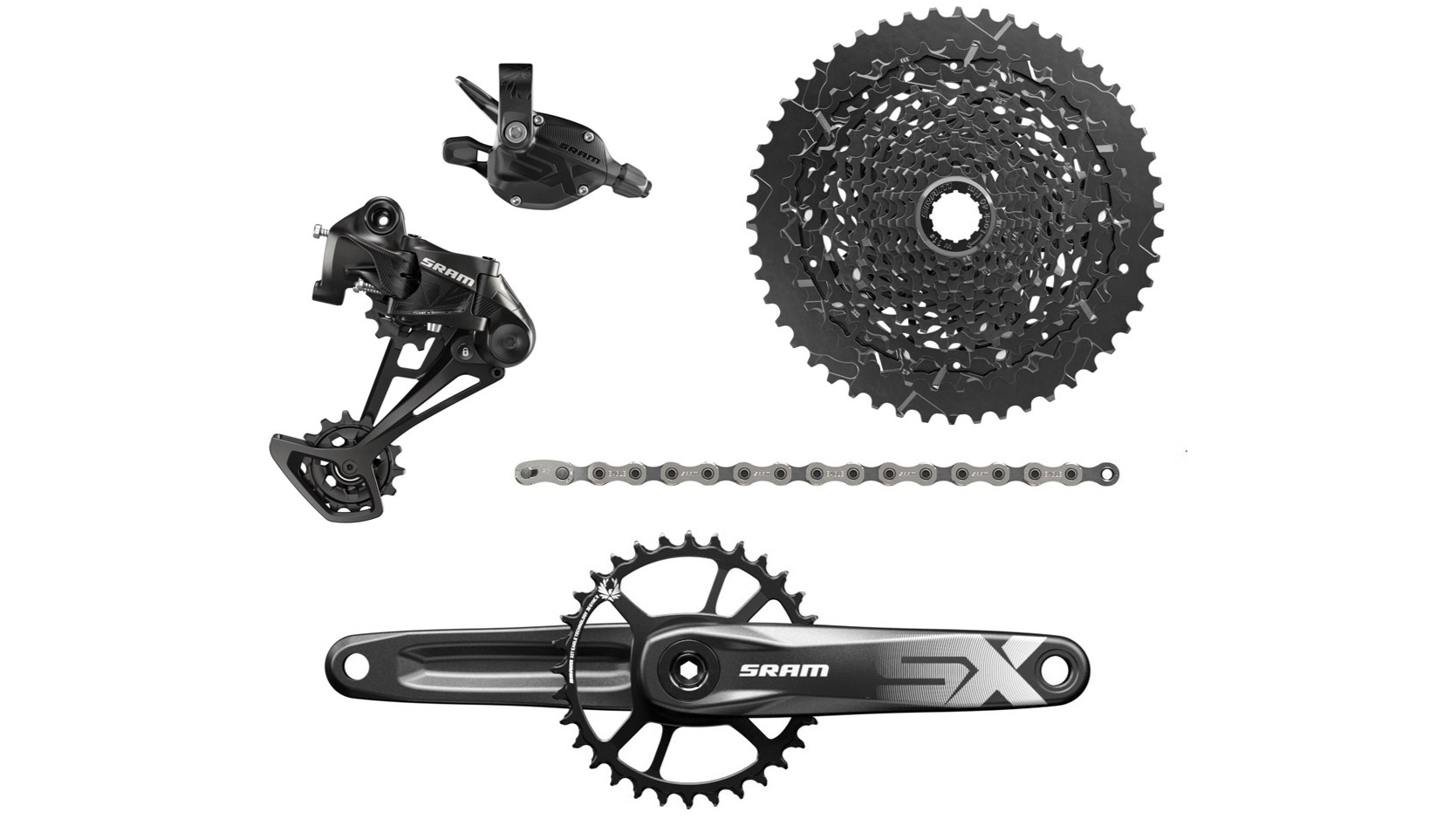
Conclusions: Should you buy SRAM SX Eagle or SRAM NX Eagle?
It’s extraordinary to think that you could potentially upgrade a 2x9 bike to 1x12 speed for less than $300 / £300. Once you’ve got your head around the fact that SX includes a lower-cost and a higher-cost variant of its mech and crankset, then you can see that you largely get what you pay for between SX and NX. Comparing the equivalent parts, NX generally has a similar design but slightly lower weights and better materials.
For an improved feel and better durability under tough conditions, you may prefer to splash out on GX for key parts like the mech and shifters, check out our SRAM NX vs GX breakdown for more details. That said SX and NX Eagle are serving a lot of mountain bikers just fine for general riding and an economical way into the 12-speed ecosystem.

Sean has old school cycle touring in his blood, with a coast to coast USA ride and a number of month-long European tours in his very relaxed palmares. Also an enthusiastic midpack club cyclocross and XC racer, he loves his role as a junior cycle coach on the Kent/Sussex borders, and likes to squeeze in a one-day unsupported 100-miler on the South Downs Way at least once a year. Triathlon and adventure racing fit into his meandering cycling past, as does clattering around the Peak District on a rigid Stumpjumper back in the day.
Height: 173cm
Weight: 65kg
Rides: Specialized Chisel Comp; Canyon Inflite CF SLX; Canyon Aeroad; Roberts custom road bike
